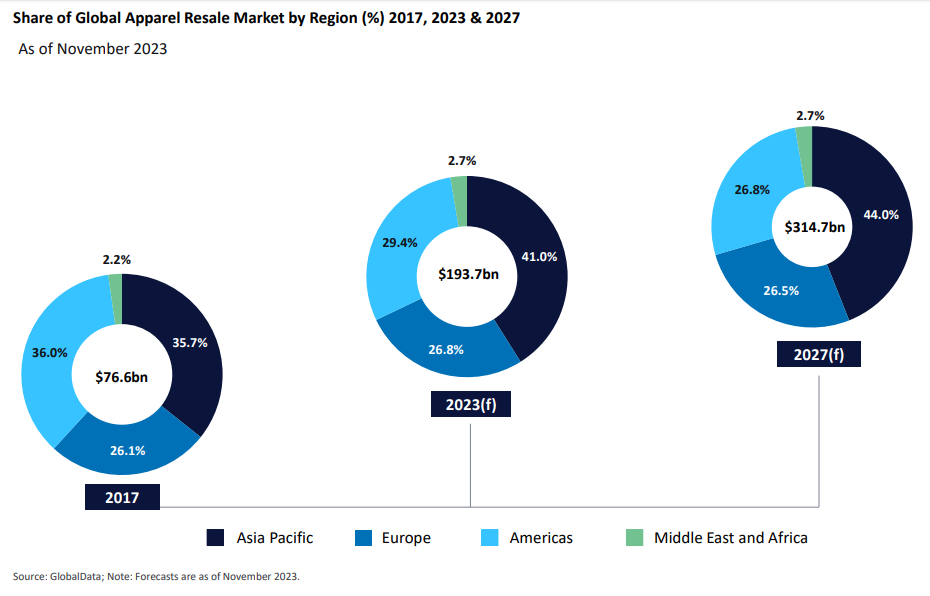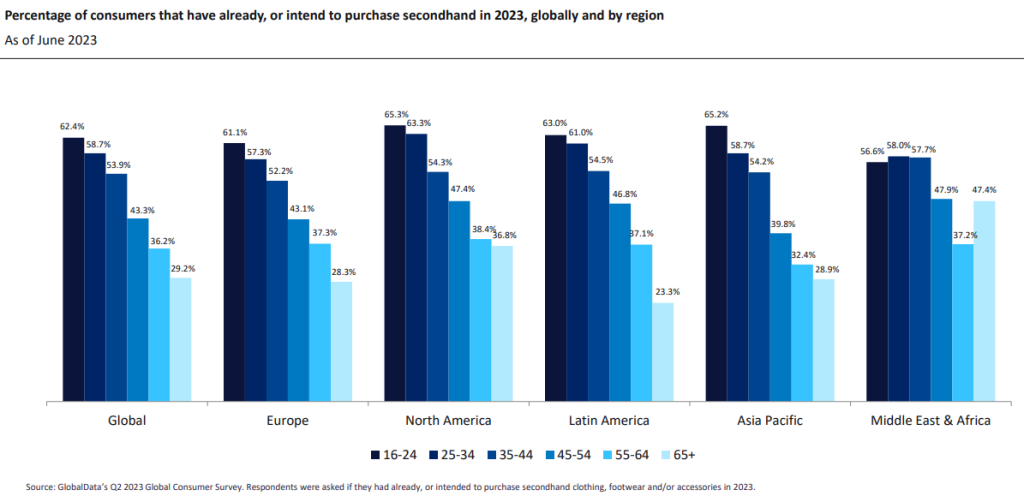
A survey conducted by Garson & Shaw found over a quarter (28%) of Americans buy second-hand clothing for environmental reasons, 58% do so to save money and 75% agree that local second-hand clothing stores help build sustainable communities.
The research showed the average US adult has 6.2 unworn clothing items in their closet, amounting to 1.6bn unused garments across the nation.
Garson & Shaw claimed that if these items were redirected to the second-hand clothing market, they could prevent 255,747 metric tonnes of waste from entering landfills annually, stop 458,307 metric tonnes of clothes from being incinerated yearly, and save water equivalent to 3m Olympic-sized swimming pools each year.
The report said currently, the US leads global second-hand clothing exports at 17.9%, followed by China (15%), the UK (7.5%), and Germany (7%). Up to 4m metric tonnes of used clothing are traded globally each year, with the US exporting approximately 700,000 metric tons annually.
In the “Global Apparel Resale Market to 2027,” report by GlobalData, it showed that the Americas share of the resale market had fallen the most between 2017 and 2023 and would continue to decline to 2027.

GlobalData described resale as an established channel in the US with many thrift stores and major platforms like Poshmark and thredUP, leaving it less scope to grow, and Latin America’s underdeveloped online market is expected to hinder its growth potential.
Garson & Shaw’s survey found large numbers of Americans (78%) already consume second-hand clothing. A greater percentage of Gen Z (90%) do than Millennials (85%), Gen X (77%), or Baby Boomers (66%).

GlobalData found young shoppers in most parts of the world are the most engaged with second hand, however the Middle East & Africa were the exception to this trend as in these regions it remains somewhat stigmatised.
The Slow Fashion Caucus research suggests Americans are increasingly trying to do their bit with 70% giving unwanted clothes away to charity, 49% giving them to family and friends and 24% taking them to collection points.
Many want wearable but unwanted clothes to be reused (80%) or for them to be given a second life abroad (51%), compared to just 15% who think they should be landfilled.
To maximise the rate of clothing reuse across the US, Garson & Shaw believe policies and regulations need to be drafted judiciously to avoid undermining the strategically vital SHC sector.
The report pointed out the industry requires clarity on policy; a regulatory framework that is stable; well-designed EPR schemes; public investment mandated by legislation such as the Americas Trade and Investment Act to create scalable business models; help open up new markets for SHC with key trading allies; and support for infrastructure in both developed and developing countries that achieves the environmentally responsible management of waste across the globe.
Ultimately, it is the used clothing sector that will deliver greater reuse of clothing around the world, which is necessary to create a truly circular economy, and “the circular textile industry urgently needs a shot in the arm,” concluded Garson & Shaw’s report.



